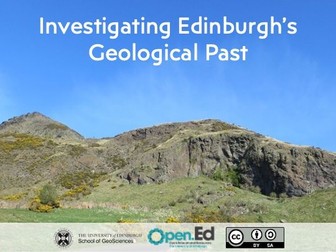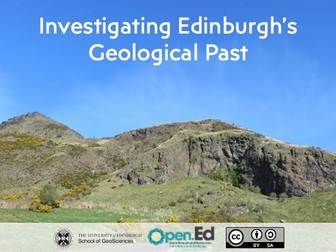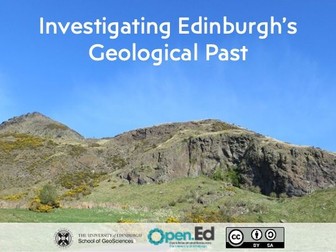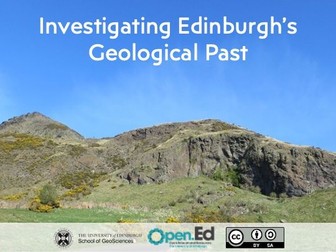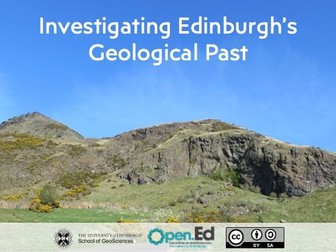Investigating Edinburgh's Geological Past Session 2: Carboniferous Edinburgh & Fieldwork Preparation
<p>‘Investigating Edinburgh’s Geological Past’ is created for learners aged 12-14 at the S2 level from the University of Edinburgh’s GeoScience Outreach Course. It introduces basic ideas of geology, such as geological time, rocks and fossils, and geological skills. Throughout the five sessions, learners are encouraged to explore the rich geological heritage of Edinburgh and to develop a range of skills to determine what the past environment of Edinburgh was like. The resource has been created as an Interdisciplinary Learning (IDL) resource, primarily between Geography and Science with relevant English skills. It will encourage students to integrate the knowledge and skills they have learnt from different subjects and use them to approach a subject that may be new to them.</p>
<p>This session explores the Carboniferous environment using BGS and prepares students for the field trip by writing aims and hypothesis and practising field sketches. The pack includes a set of slides in Powerpoint and PDF formats and worksheets in Word.docx and PDF formats, along with a Teacher’s guide to help teachers run a class with the slides.</p>
<p><strong>Links to the accompanying sessions:</strong><br />
<a href="https://www.tes.com/teaching-resource/resource-13062588">One: Rock Descriptions</a>: Teaching and demonstration of three different rock types and their formation, followed by a hands-on activity in describing rocks.<br />
Two: Carboniferous Edinburgh and Fieldwork Preparation (this session): Exploring the Carboniferous environment using BGS poster; Preparation for the field trip by writing aims and hypothesis and practising field sketches.<br />
<a href="https://www.tes.com/teaching-resource/resource-13062607">Three: Holyrood Park Field Trip</a>: Field trip to Holyrood Park to visit Camstone Quarry (Sandstones and past environments) and The Dasses (intrusive igneous rocks, cooling rates and erosion).<br />
<a href="https://www.tes.com/teaching-resource/resource-13062613">Four: Reconstructing Past Environments</a>: Group work using Evidence Packs and field trip observations to determine what the environment during the Carboniferous period was like. Students to write a postcard to consolidate this knowledge as a picture and in text.<br />
<a href="https://www.tes.com/teaching-resource/-13062618">Five: Edinburgh in 100 years’ Time</a>: Consideration of different development pressures on Holyrood Park in the future. Students work in groups to present a proposed development.</p>
<p><strong>Experiences and Outcomes of this session:</strong><br />
SOC 3‐14a: I can use a range of maps and geographical information systems to gather, interpret and present conclusions and can locate a range of features within Scotland, UK, Europe and the wider world.</p>
<p>‘Investigating Edinburgh’s Geological Past’ was created by Jenny Ridout, adapted into an OER by Mayu Ishimoto. The resource is available under a Creative Commons AttributionShareAlike 4.0 license unless otherwise stated.</p>
<p>Header Image Attribution: Arthur’s Seat by Jenny Ridout, 2023, CC BY-SA.</p>
